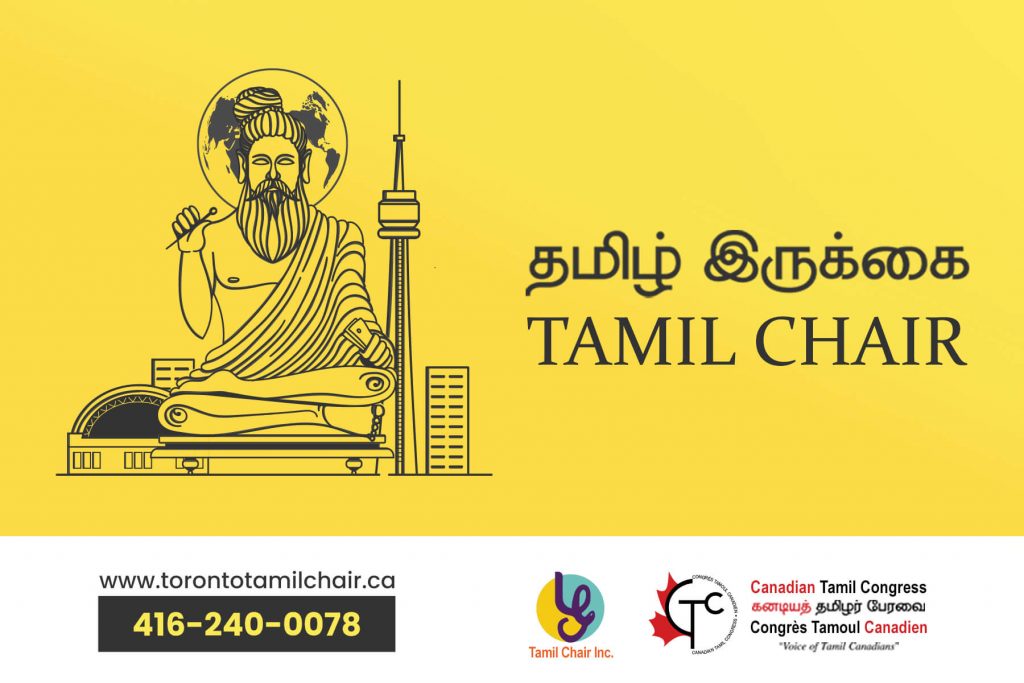Toronto Tamil Chair: How Kimp Created A Historic Logo
Back in June 2018, the Canadian Tamil Congress, the University of Toronto Scarborough, and Tamil Chair Inc., based in the U.S., announced plans for a historic fundraising campaign. And Toronto Tamil Chair was officially launched!

These 3 organizations pledged to raise $3 million to support an endowment for a full-time chair position at the University of Toronto. This position would explore Tamil language, history, and culture through research and scholarship.
And just this week it was announced that the $3 million fundraising goal has been reached! All thanks to the support of 3800 donors around the world! It took a massive global effort. And the tireless work of many volunteers as the pandemic forced the fundraising campaign to pivot online.
The significance of Toronto Tamil Chair
Tamil is one of the world’s oldest living languages. This might be the first you’re hearing of it. But it’s actually spoken by over 80 million people around the world. Add to that, Tamil poetry and literature have existed for more than 2000 years. These large volumes of works, have many thought-provoking ideas in them. But they are often neglected in academia outside of Asia.
Inspired to change this, the Canadian Tamil Congress, University of Toronto, and Tamil Chair Inc. came together with 2 common goals. The academic advancement of the language, and making it much more accessible to the rest of the world.
Creating the Toronto Tamil Chair Logo
This is where Kimp got involved! We’ve had the opportunity to support various initiatives of the Canadian Tamil Congress in the past. And we were thrilled to be asked to create the logo for Toronto Tamil Chair.
For this logo, the Toronto Tamil Chair team had a few requirements:
- Including Thiruvalluvar, a renowned Tamil poet and philosopher.
- Incorporating the Toronto skyline, and specifically the iconic C.N. Tower.
- Adding a globe to represent the global Tamil community, and the far-reaching wisdom of Tamil literature.
- The “Tamil Chair” text in both English and Tamil.
Now we get a lot of unique logo requests. But this one definitely pushed our designers to deliver their creative best. And so, with all of these different elements to include, we went in the direction of a custom illustrated logo.
How the pieces came together
We started with an illustration of Thiruvalluvar. Thiruvalluvar is best known for writing the Tirukkuṟaḷ. This ancient collection includes couplets on topics as far-ranging as ethics, politics, and love. And it is still widely celebrated and cited today. Given the goal of the Chair to make texts like this more accessible, this illustration became the focal point of the logo.
Next, we added illustrations of the most recognizable parts of the Toronto skyline. This was to represent the future home of the Tamil Chair. But also, a nod to the fact that the Greater Toronto Area is home to the largest Tamil community outside of India or Sri Lanka.
We then placed a globe behind Thiruvalluvar to symbolize the global presence of the Tamil language. And the ways in which this initiative would create connections. Lastly, we added the “Tamil Chair” text in both Tamil and English. This was to ensure it was accessible and inclusive. Not only to those familiar with Tamil but those interested in learning more.

A logo worth a thousand words
We often hear the saying that a picture is worth a thousand words. And when it comes to a logo, this is no doubt especially true. The right logo can help you convey certain messages, and connect with your audience in an impactful way. Just as we’ve seen throughout the Toronto Tamil Chair fundraising campaign, as it engaged volunteers, advocates, and donors around the world. We’re grateful to have played a small role in this historic feat. And inspired by the passion and progress made possible by a group of committed volunteers.
As the saying goes:
“Never underestimate the power of a small group of committed people to change the world. In fact, it is the only thing that ever has.”
~ Margaret Mead